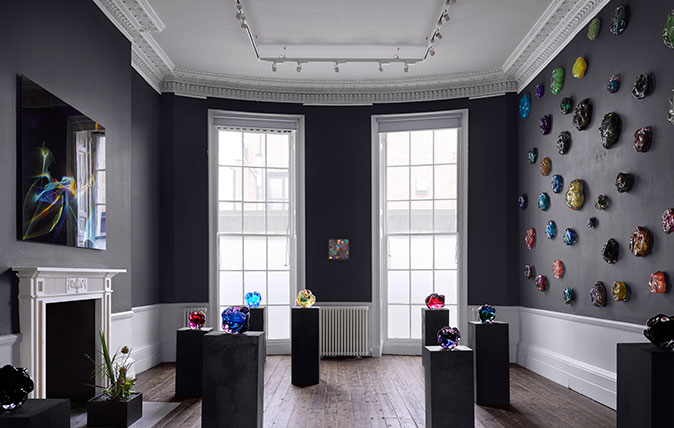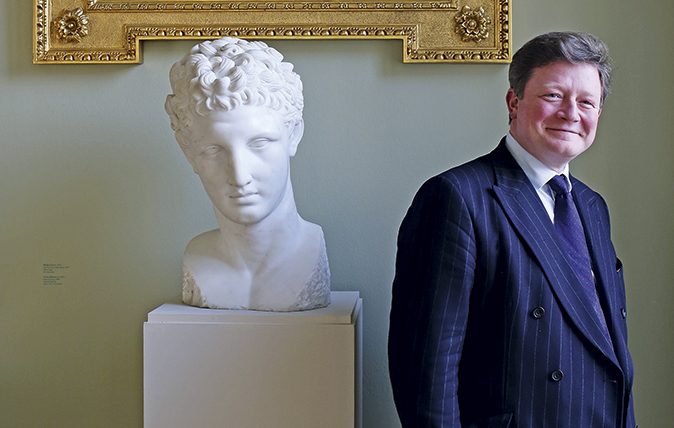Christopher Boyle on why the future is Georgian: 'It informs how we exist today and can do in the future’
Clive Aslet meets the chairman of the Georgian Group, and hears why the 18th century was best.

Every Tuesday afternoon, we take a look back in Country Life's architecture archive. Today, it's a 2017 interview with Christopher Boyle, chairman of The Georgian Group.
'I don’t live in the 21st century,’ declares Christopher Boyle. ‘I never have. Even from the tiniest age, I’ve always been stuck somewhere in the first half of the 18th.’
His religion prevents him from believing in reincarnation, but he’s thought about it. ‘It’s not just the buildings, but music, literature—everything. I’ve been teased for laughing out loud on the Tube while reading Alexander Pope.’
Dentistry left something to be desired 250 years ago and he admits to worrying about the food, but more or less every other aspect of life was better under the Georges. ‘The invention of the internal combustion engine spelled the end of civilisation—that and the 1832 Reform Act, of course.’
The chairmanship of the Georgian Group could have been made for him. After 18 months in post, Mr Boyle is delighting in the conservation charity’s 80th anniversary. I meet him in its elegant W1 Adam town house, 6, Fitzroy Square (Country Life, January 25, 2017), where last month’s exhibition, ‘Splendour!’, centred on restoration crafts: ‘All the things you need if you’re going to look after or adapt an 18th-century building, from lime mortar to scagliola tables.
'It’s to defeat the notion that, even if you wanted to replicate the best Georgian work, you couldn’t do it. We don’t believe that. We know it’s not true. We can do anything and everything that was ever done before.’
Square of face, with a flush of Cumbrian colour to his cheeks, Mr Boyle even looks the part— it’s easy to imagine him being painted by Hogarth. At Kirklinton, the estate that he bought a few miles south of the Scottish border, he’s proud to be ‘an improving squire. I plant trees. I re-impart my park and put deer in it’.
Sign up for the Country Life Newsletter
Exquisite houses, the beauty of Nature, and how to get the most from your life, straight to your inbox.
He’s creating a house behind its 1680s façade, all that survives of Kirklinton Hall. Isn’t that a bit early for him? Perhaps, but he gave up the sugary elegance of the mid Georgians long ago. ‘Since my early twenties, I’ve been solidly Kent. There’s something very reliable and masculine about the taste at the beginning of the 18th century, which could also be lavish and rich.’ It was a time of ‘rumbustious’ characters, expressed in novels such as Tom Jones and Tristram Shandy. ‘I like contrast. I like contradiction—the maelstrom mix. You get that [from] then.’
He’s effectively his own architect and the house that’s arising won’t be a copy of anything that pre- existed: by a possibly happy stroke of fate, nothing is known about the original building beyond the few walls that survive. Instead, it will ‘be imbued with the spirit of the old in the ways that [architects] Detmar Blow or Lorimer did. I have the same mindset as the Arts-and-Crafts people of the beginning of the 20th century.’

He employs a team of craftsmen ‘who are not Arts-and-Crafts because they wouldn’t see them- selves as part of a revival—they just do it’. Drawings are made in imperial measurements: ‘We know an inch is an inch not 2.5cm.’ The brain can’t be fooled: panelling made to a metric scale looks subliminally wrong.
One could assume that Mr Boyle is in the mould of eccentric architect Albert Richardson, eschewing 21st-century technology to spend his evenings playing the spinet in candlelit gloom, but he isn’t. He uses email, takes aeroplanes. His wife and three children are on hand to keep the 18th century firmly in check. Nevertheless, his complete familiarity with the period is, he explains, ‘a fundamental driver of my whole approach. Because I inhabit the 18th century, I don’t see it as being in aspic, a dead artefact we have to leave behind and put in a box. It informs how we exist today and can do in the future’.
Mr Boyle is still buoyed by the optimism of the Thatcher decade, which coincided with his university years (at Merton College, Oxford, where he joined the Georgian Group). ‘I don’t accept the concept that we’re managing retreat. I don’t see why, if we approach things in a positive way, we can’t be just as marvellous.’
One of his joys is to see 21st-century wings added to a house that was restored, if not newly built, in the late 20th century. ‘You see the built environment working as it always has— something brilliant being added to something that was pretty good anyway to create an even greater whole.’
His self-identification with all things Georgian comes, he says, from his Cumbrian upbringing. ‘The landscape was laid out after a very late enclosure award in the 1820s and hasn’t changed since. The whole place is imbued with a late-Georgian feel. It’s not a polite landscape in the sense that Wiltshire might be; it reflects a more rough-and-ready existence.’
When Mr Boyle left Sedbergh, his father, a farmer, explained that there was no money in farming. ‘My only other interest was drawing pictures, in which there was also no money, so I studied jurisprudence.’ Strangely, for a leading planning QC at Landmark Chambers, he finds law ‘terribly tedious’, but that’s the advantage of his specialism: ‘There’s almost no law to it. Most of the public-law principles were established in about 1965 and haven’t changed since. It’s about evidence, facts, arguments and, particularly, expert opinion.’ Most of his work concerns very large housing schemes: ‘Nothing,’ he says in words that must delight all legal ears, ‘is ever black and white.’
Few of today’s schemes produce a Bath or an Edinburgh, but why shouldn’t they? ‘If you get it right—and that’s the problem, people don’t—there’s no reason why new-build shouldn’t be just as delightful as anything that went before.’
This is a principle he takes to discussions in the Georgian Group. ‘When I come to look at new interventions in the historic environment, I don’t approach it with a mind-set that says nothing must change. We can go on adding layers.’ Only they must be the right layers. Legal battles are often fought over the desirability of a development, with too little attention paid to what the result will look like. ‘I’d do it other way round. Development is needed—let’s see how to make it great.’
Membership of the Georgian Society starts at £50 (020–7529 8920; www.georgiangroup.org.uk)
-
 380 acres and 90 bedrooms on the £25m private island being sold by one of Britain's top music producers
380 acres and 90 bedrooms on the £25m private island being sold by one of Britain's top music producersStormzy, Rihanna and the Rolling Stones are just a part of the story at Osea Island, a dot on the map in the seas off Essex.
By Lotte Brundle
-
 'A delicious chance to step back in time and bask in the best of Britain': An insider's guide to The Season
'A delicious chance to step back in time and bask in the best of Britain': An insider's guide to The SeasonHere's how to navigate this summer's top events in style, from those who know best.
By Madeleine Silver